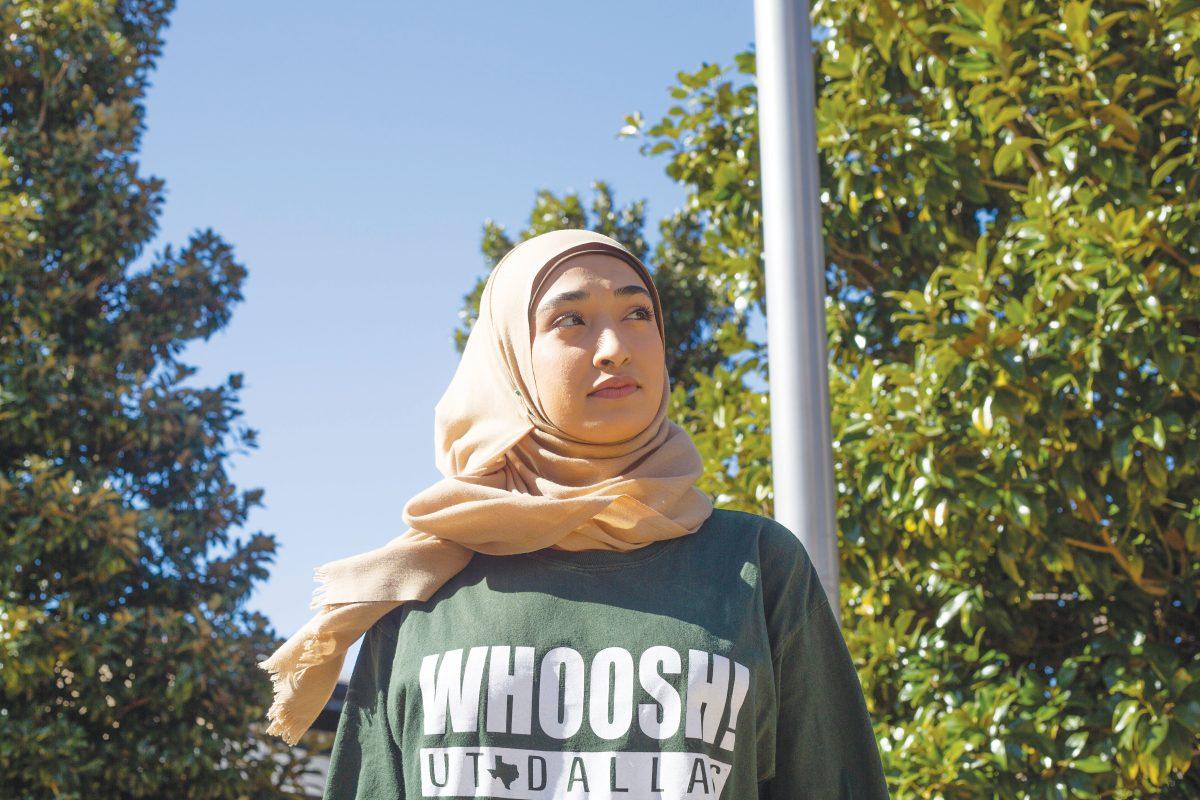
Child development and psychology senior Aminah Khan participates in a service learning class design to teach middle school girls about building confidence. Photo by Madeline Ambrose | Mercury Staff.
UTD is joining the nationally growing trend of service
learning in the classroom. This semester, the university is offering 10 classes
centered around service.
In 2017, UTD received $1 million through the University of
Texas System to incorporate community engagement into the curriculum. Since
then, the school has offered a variety of classes, from helping the homeless
youth population to supporting students who identify as parents, to reach this
goal.
Cynthia Sorto, a program manager at the Office of Diversity
and Community Engagement, said the difference between service learning and volunteering
lies in who benefits.
“Volunteer work feels very one-way, where you go and
service that group,” Sorto said. “Service learning is a two-way relationship.
Yes, we are going to support a community and spend time and give back, but
there is also a very clear understanding that the community has something
they’re giving us.”
Sorto is a facilitator of a class with 10 UTD students that
teaches goal setting and positive psychology to high school newcomers, most of
whom have lived in the United States for less than a year.
“There are some language barriers,” Sorto said. “But there
is also just the cultural and social navigating of coming to a whole new
country, being new and just being in high school with all that it entails.”
Aminah Khan, a child development and psychology senior, is
taking a service learning class this semester that focuses on building
confidence in middle school girls. She said through the class, she saw a
distinction between service learning and volunteerism.
“In
volunteering, you have someone that laid down the framework for how things are
going to be, and you are just filling a role and completing that task,” Khan
said. “That contrasts with service learning, where you are learning
just as much or more than the people you’re helping.”
Khan
said her class allows UTD students to take ownership of their service by
designing the pieces of the curriculum they teach their middle school
participants. Her favorite so far has been a lesson on beauty standards where
participants made collages out of magazines.
“In
service learning, you also have more space to create your own interactions and
influence the material and curriculum,” Khan said.
Khan has a background in teaching Sunday school but said
she found this experience different and learned to be more flexible.
“Service learning, in a sense, is teaching, but we like to
see it as facilitating,” Khan said. “Especially since it is after school, we
don’t want anything too structured.”
Khan
said in lieu of the traditional rigidity of classrooms, UTD students bring snacks
and have involved discussions.
Sorto
said her favorite part of service learning classes is seeing students realize
their full potential and grow over the course of the semester. Sorto said she
hopes the university will institutionalize service learning across all majors.
“It is
sometimes hard to give and share as an undergraduate,” Sorto said. “You think,
‘One day when I graduate, I’ll be the expert or I’ll know more.’ But no — right
now, in this moment, you have something to give. This class is all about
saying, ‘Let’s go share it with the Richardson community.’”
Although
UTD is a part of Richardson, Sorto said the relationship sometimes feels
hidden. She spent the first three weeks with her class before going into the
community to do service, teaching students about the demographics of Richardson
and the high school they were serving.
“I would love for more students to have this opportunity
to be able to give back to, but also gain from, the community. I want to find a
way to make this a part of UTD,” Sorto said. “I think that speaks to what UTD
is trying to build — a culture and a community — and service learning is all a
part of that.”